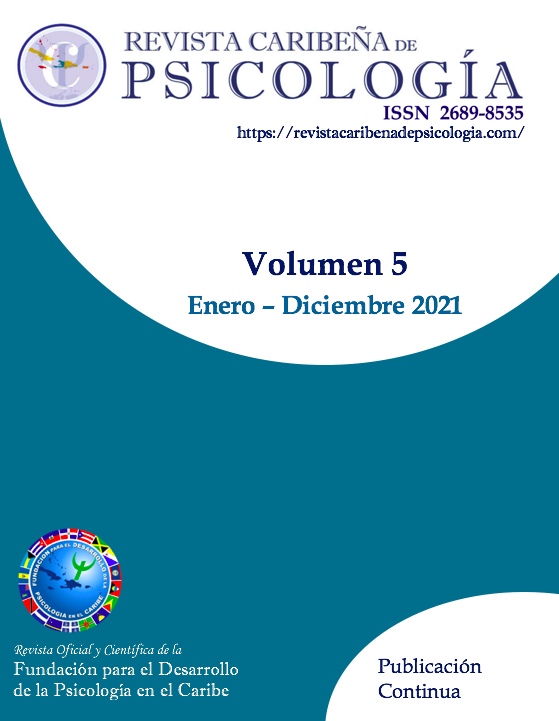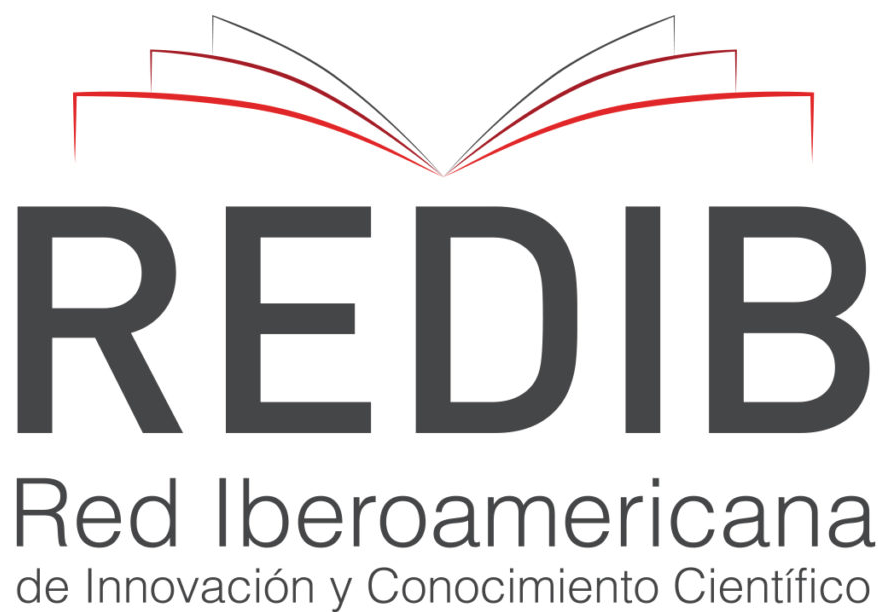Tartamudez y Trabajo: Un Estudio Exploratorio
DOI:
https://doi.org/10.37226/rcp.v5i1.5607Palabras clave:
diversidad, inclusión, tartamudez, trabajoResumen
Las organizaciones de hoy día buscan ser unas donde se valore la diversidad y se practique la inclusión. Muchas se enfocan en elementos como la cultura, el género, la edad, pero no prestan atención a otras fuentes de diversidad como puede ser la tartamudez. El objetivo de este estudio fue explorar las experiencias en el contexto de trabajo que experimenta un grupo de 13 personas con tartamudez. La muestra fue una por conveniencia y la participación consistió en contestar dos cuestionarios para obtener los datos pertinentes a nuestro objetivo investigativo. Los resultados nos indican que las personas con tartamudez que formaron parte del estudio confrontan problemas en la relación con sus compañeros de trabajo, en la realización de las tareas asociadas a su puesto y obstáculos para poder progresar en la organización. De igual modo, también indicaron que si no fuera por su tartamudez entienden que tendrían una experiencia de trabajo diferente. Estos resultados nos plantean el reto de ser más inclusivos en los contextos laborales y concienciar más a los empleados sobre la diversidad funcional.
Citas
ASHA. (2021). ¿Qué es la tartamudez? https://www.asha.org/public/speech/spanish/la-tartamudez/
Carlo, E., & St. Louis, K. (2014). Actitudes de adultos puertorri-queños hacia la tartamudez y hacia el tartajeo. Revista OPPH-LA, 32(1), 16-21.
Castejón, L., Núñez, J., & González Pienda, J. (2005). Contenido del estereotipo de los maestros sobre los alumnos tartamudos. Psicothema. 17(3). 496-501.
Craig, A.R., Blumgart, E. & Tran, Y. (2009). The impact of stut-tering on the quality of life in adult people who stutter. Jour-nal of Fluency Disorders, 34, 61-71. https://doi.org/10.1016/j.jfludis.2009.05.002
De Anca, C. & Vázquez, A. (2007). Managing diversity in the global organization. Palgrave Macmillan. https://doi.org/10.1057/9780230800885
DeNisi, A.S. (2014) An I/O Psychologist’s perspective on diversity and inclusion in the workplace. En B.M. Ferdman & B.R. Deane (Eds.), Diversity at work: The practice of inclusion (pags. 564-579). John Wiley & Sons, Inc.
Ferdman, B.M. (2014). The practice of inclusion in diverse organi-zations: Toward a systemic and inclusive framework. En B.M. Ferdman & B.R. Deane (Eds.), Diversity at work: The practice of inclusion (pags. 3-54). John Wiley & Sons, Inc.
Ferdman, B.M. & Morgan, L. (2014). Creating inclusion for one-self: Knowing, accepting, and expressing one’s whole self at work. En B.M. Ferdman & B.R. Deane (Eds.), Diversity at work: The practice of inclusion (pags. 93-127). John Wiley & Sons, Inc.
Fundación Americana de la Tartamudez (2021). ¿Sabías que…? (Did you know...). https://www.tartamudez.org/sabias-que-did-you-know
Geerlach, H.,Totty, E., Subramanian, A., & Zebrowsky, P. (2018). Stuttering and labor market in the United States. Journal of Speech, Language, and Hearing Research, 61(7), 1649-1663. https://doi.org/10.1044/2018_JSLHR-S-17-0353
Guitar, B. (1998). Stuttering: an integrated approach to its nature and treatment. Williams and Wilkins.
Hernández, M. (2014). Bullying y tartamudez: Una breve revisión de literatura. Ciencias de la Conducta. 29 (1), 9-19.
Hernández Sampieri, R., Fernández Collado, C. & Baptista Lucio, M.P. (2010). Metodología de investigación. McGraw Hill.
Hughes, S., Gabel, R., Irani, F. & Schlagheck, A. (2010). University student’s explanations for their description of people who stutter. An exploratory mixed model story. Journal of Fluency Disorders, 35, 280-298. https://doi.org/10.1016/j.jfludis.2010.05.006
Iimura, D., & Miyamoto, S. (2021). Public attitudes toward people who stutter in the workplace: A questionnaire survey of Ja-panese employees. Journal of Communication Disorders, 89. https://doi.org/10.1016/j.jcomdis.2020.106072
Jayne, M. & Dipboye, R. L. (2004). Leveraging diversity to impro-ve business performance: Research findings and recommen-dations for organizations. Human Resource Management, 43(4), 409-424. https://doi.org/10.1002/hrm.20033
Klein, J.F., & Hood, S.B. (2004). The impact on stuttering on em-ployment opportunities and job performance. Journal of Fluen-cy Disorders, 29, 255-273. https://doi.org/10.1016/j.jfludis.2004.08.001
Langevin, M., Packman, A. & Onslow, M. (2009). Peer responses to stuttering in the preschool setting. American Journal of Speech-Language Pathology, 18, 264-276. http://dx.doi.org/10.1044/1058-0360(2009/07-0087
Manning, W.H. (2009). Clinical decision making in fluency disorders (3rd ed.). Singular-Thomson.
Mendyra.com. (2021). ¿Qué es la tartamudez? https://www.mindyra.com/es-cr/solutions/adults/stuttering
Muchinsky, P. & Howes, S.S. (2019). Psychology applied to work. Hypergraphic Press.
Ñaupas Paitán, H., Valdivia Dueñas, M.R., Palacios Vilela, J.J. & Romero Delgado, H.E. (2018). Metodología de la investigación cuantitativa-cualitativa y redacción de la tesis. Ediciones de la U.
Palasik, S., Gabel, R., Hughes, C., & Rusnak, E. (2012). Perceptions about occupational experiences by people who stutter. SGI 4 Perspectives on Fluency and Fluency Disorders, 22, 22-23. https://doi.org/10.1044/ffd22.1.22
Rice, M., & Kroll, R. (1997). Workplace experiences of people who stutters. Journal of Fluency Disorders, 22, 140.
Rice, M., & Kroll, R. (2006). The impact of stuttering at work: Cha-llenges and discrimination. International Stuttering Awareness Day Online Conference http://www.mnsu.edu/comdis/isad9/isadcon9.html
Romero Flores, E. & Villanueva Flores, M. (2016). La gestión de la diversidad en las organizaciones: Estudio de casos en el Cam-po de Gibraltar. Gestión Joven, 15, 26-35.
Silverman, F.H., & Bongey, T.A. (1997). Nurses’ attitudes toward physicians who stutter. Journal of Fluency Disorders, 22, 61-62.
Triandis, H. (2003). The future of workforce diversity in interna-tional organisations: A commentary. Applied Psychology: An In-ternational Review, 52(3), 486-496. https://doi.org/10.1111/1464-0597.00146
Venkatagiri, H.S. (2009). What do people who stutter want-fluency or freedom? Journal of Speech, Language and Hearing Re-search, 52, 500-515. https://doi.org/10.1044/1092-4388(2008/07-0019)
Weiner, C., & Tetnowski, J. (2016). Stuttering discrimination un-der the law. Here’s a look at how the law applies. The ASHA Leader, 21, 52-57. https://doi.org/10.1044/leader.FTR2.21072016.52
Zhang, J., & Kalinowski, J. (2012). Culture and listeners gaze res-ponses to stuttering. International Journal of Language & Com-munication Disorders, 47(4), 388-397. https://doi.org/10.1111/j.1460-6984.2012.00152.x
Publicado
Cómo citar
Número
Sección
Licencia
Derechos de autor 2021 Margarita Hernández Rosado, Miguel E Martinez Lugo

Esta obra está bajo una licencia internacional Creative Commons Atribución 4.0.







